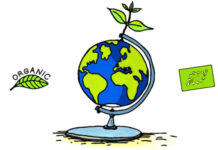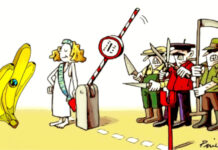Increasing fish consumption without depleting fish stocks or subjecting watersheds to environmental stress, how to do it? In aquaculture biological one possible solution.
Ensuring populations of the planet, regular consumption of seafood is one of the priorities that recur in nutritional guidelines. Aiming to offer protein and ‘good fats‘
(Omega 3) to a growing global population that is still plagued by malnutrition
widespread, starting in early childhood.
Sustainable aquaculture
, that
bio
in particular, provides an opportunity to fulfill these objectives through ecosystem-friendly and animal welfare-friendly breeding practices. It therefore also receives support in Italy from the Ministry of Agriculture, Food, Forestry and Tourism (MiPAAFT). Through the Council for Agricultural Research and Analysis of Agricultural Economics (
Create
)
.
Seas without fish
The dystopian scenario of fishless seas, lagoons, lakes and rivers is getting closer and closer to reality. Due to illegal fishing (
Illegal, Unreported and Unregulated fishing
)
, but also of dastardly European policies. The Common Fisheries Policy (Common Fisheries Policy, CFP), in the 2014 reform, has indeed theorized the goal of safeguarding the stock fish.
The European fisheries policy has allocatedTotal Allowable Catch(TAC) limits to each member state during 2015-2020. But these limits are redefined each year at the Council of Member States(EU Agriculture and Fisheries Council) through political compromises, rather than based on the size of the fish population and the extinction risks of endangered species. And they are manifestly excessive in relation to the stated goals.
EU fishing quotas
are disproportionate with the scientific recommendations of the
In
ternational Council for the Exploration of the Sea
(ICES, an organization to which Italy is not a member). (1) It is the reporting of
New Economics Foundation
(NEF)
, which again this year highlights the unacceptable gap between the allowances granted in the Northeast Atlantic compared to the limits bearable by marine habitat.
(2)
Aquaculture, prospects and limitations
At the level theoretical, aquaculture represents a viable alternative to fishing to promote the availability of fish products. But even this production method has its dark sides.
‘
Aquaculture is the fastest growing food production sector worldwide
. However, some of the negative impacts of this activity have been given much prominence, among them the exploitation of wild stocks of small pelagics for fishmeal production, the escape of alien species or genetically modified individuals, the spread of diseases to the detriment of natural stocks, the release of pollutants into the surrounding environment‘ (Crea, dossier‘The consumption of farmed and organic fish in Italy‘).
Change #change is possible And indeed dutiful. We must reverse course by adopting sustainable aquaculture practices, even better if organic. Once again, progress lies in the hands of the consumaAtors, who must be informed to accrue awareness of the value of products that come from certified organic aquaculture. And this is one of the goals of the project #
Biobreed
, funded by the Ministry of Agriculture and led by Crea.
Aquaculture in Italy
Aquaculture
Made in Italy
differs from that of other EU countries in the greater variety of species reared, recently extended to include ombrines.
The top 5 species produced in 2016 are:
– mussels(Mytilus galloprovincialis), more commonly known as mussels (or muscles, peoci, pedoli, moscioli, from one Region to another), 5,898 tons,
– rainbow trout(Oncorhynchus mykiss), 900 ton,
– True clam(Ruditapes philippinarum), 263.6 tons,
– sea bream(Sparus aurata), 96.9 tons,
– mullet(Mullet), 89 tons.
Organic aquaculture, on the other hand, is still in its infancy. The presentation by Crea researchers at the #AquaFarm trade fair – on 13-14.2.19 in Pordenone – indicates just 29 organic farms (5 of which started organic production in 2017). Down from 2015, when there were 40 operators. A pebble in the lake, compared to more than 3,000 conventional aquaculture facilities, with growth close to 60 percent. (3) As well as, unfortunately, the tail end in Europe, where organic farms account for an average of 4 percent of aquaculture. (4)
Organic aquaculture, survey of Italian consumers
8 thousand responses
have so far been collected and processed by Crea, in the survey aimed at ascertaining consumer interest in organic aquaculture in Italy.
Fifty-two percent of Italian consumers say they are willing to value products derived from sustainable fisheries or organic aquaculture and recognize a higher price for their purchase. The motivations are similar to those blowing on the growth of the entire organic agribusiness sector:
– absence of antibiotics
during the rearing process (58 percent),
– More controls throughout the supply chain (47 percent),
– Lower environmental impact (34 percent).
Aquaculture products continue to reap consumer acclaim as an alternative to fish in Italians’ ordinary consumption, researchers note. Thirty percent of the sample buy farmed fish less than once a month, spending 20-50 euros a month. Fresh is the most popular (84 percent) and the place of purchase is mainly the supermarket (87 percent). Marine fish is the predominantly purchased farmed product (77 percent), followed by shellfish (48 percent), crustaceans (37 percent) and freshwater fish (31 percent).
Marta Strinati and Dario Dongo
Notes
(1) TheInternational Council for the Exploration of the Sea (ICES) has been operating since 1902. In its 116-year history, Italy was a member for 22 years (during the periods 1927-1931 and 1956-1974). Currently participating are Denmark, Finland, Germany, the Netherlands, Norway, Sweden, Russia, the United Kingdom, Belgium, the United States, France, Portugal, Poland, Latvia, Estonia, Spain, Ireland, Iceland, Canada, and Lithuania
(2) In the Northeast Atlantic, Sweden, the United Kingdom and Ireland are the member states with the largest shares of TACs compared to ICES recommended limits. With overruns of 52%, 24% and 22%, respectively.
(3) Source Centro Studi Confagricoltura, data processing extracted from the national database, 2017 data (Livestock Registry established by the Ministry of Health at the Istituto G. Caporale of Teramo)
(4) Source Eumofa(European Market Observatory for fisheries and aquaculture), 2015 data.









